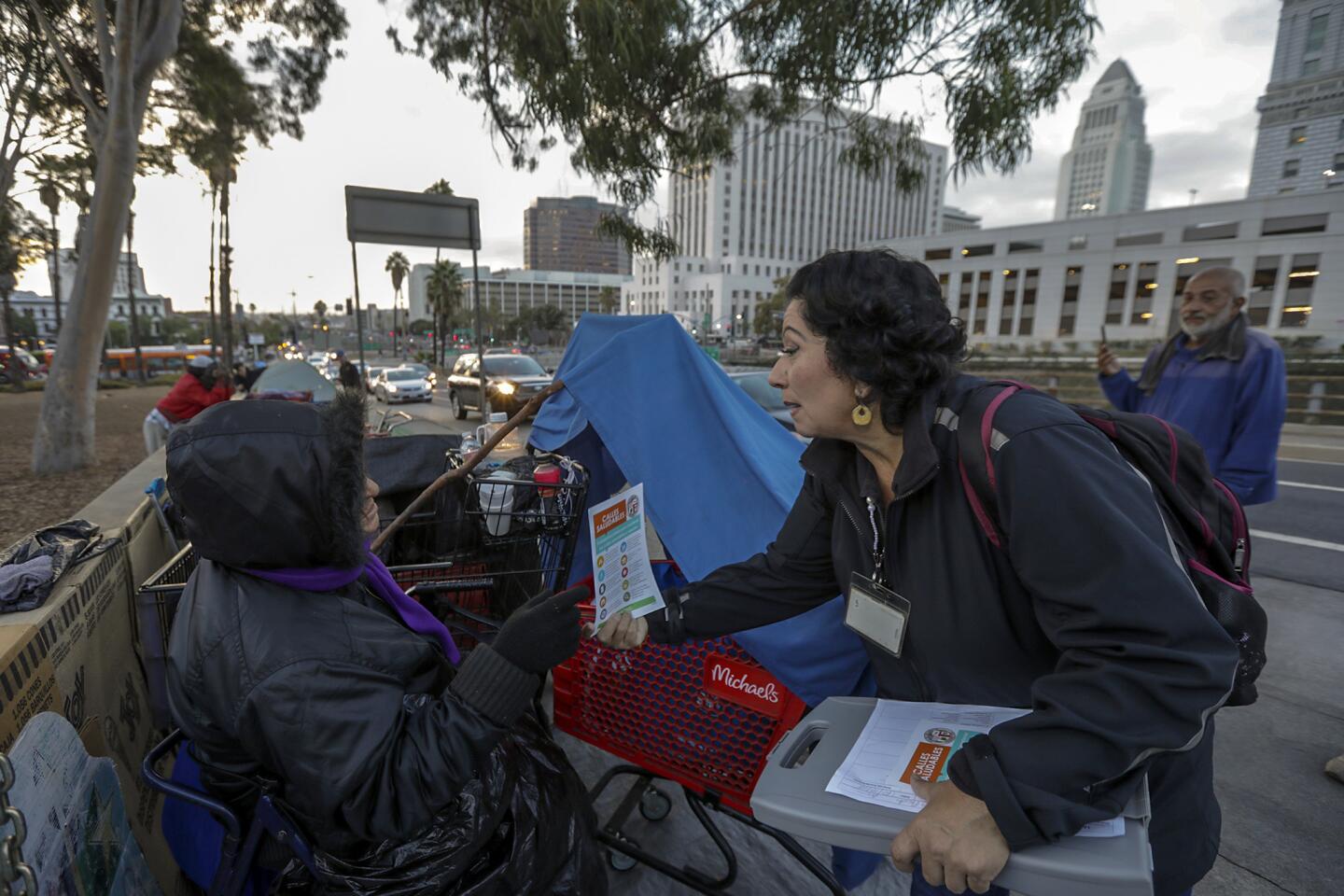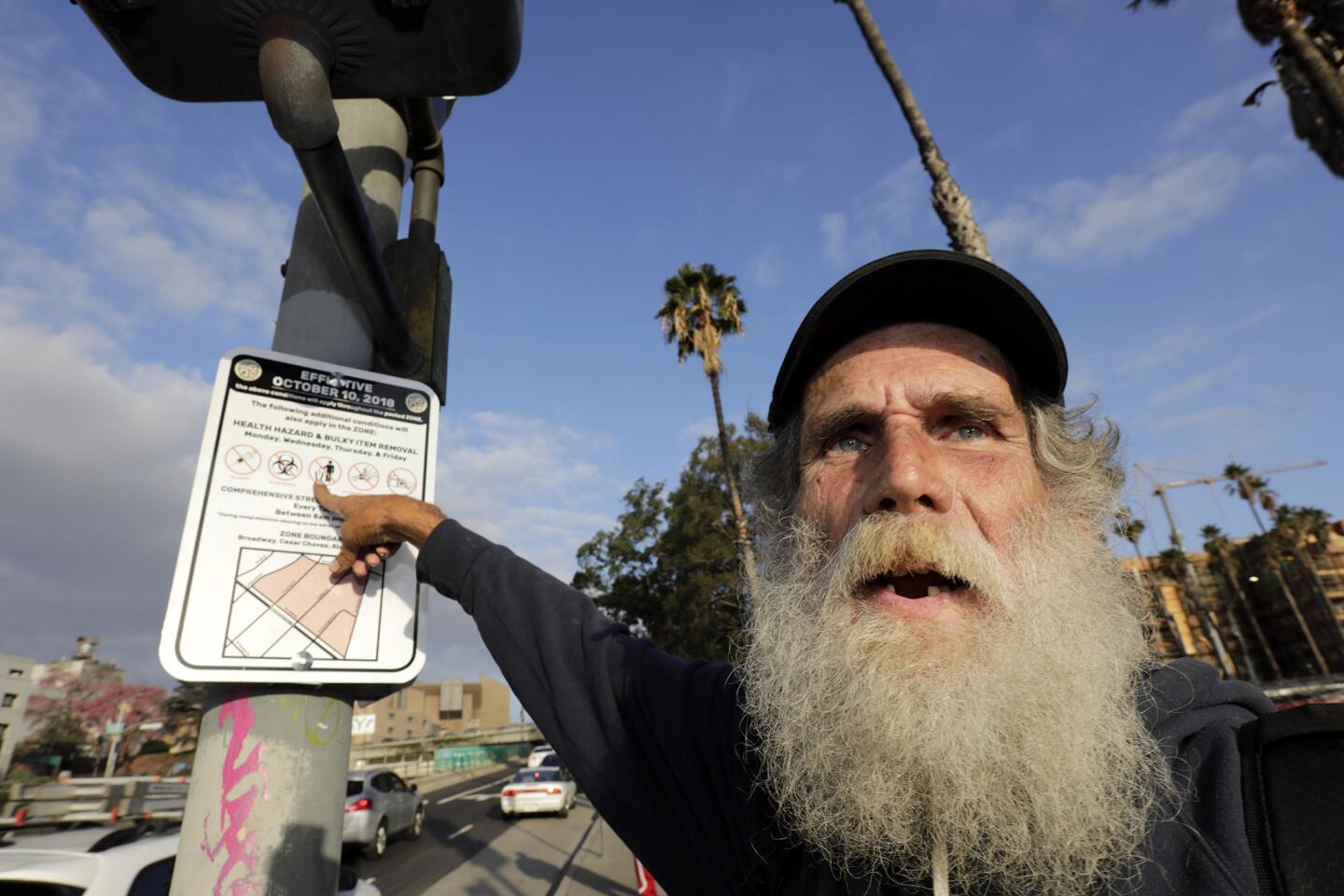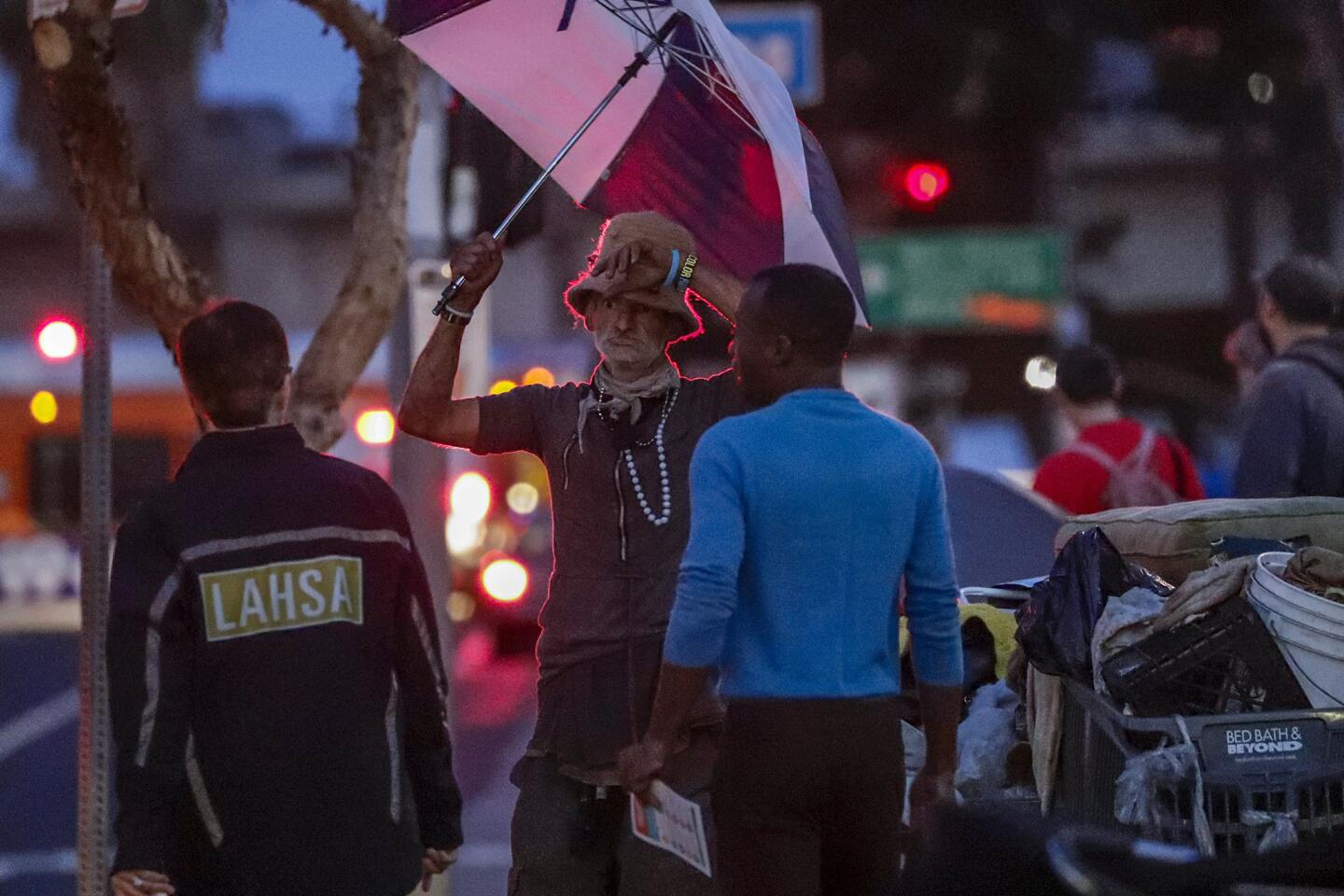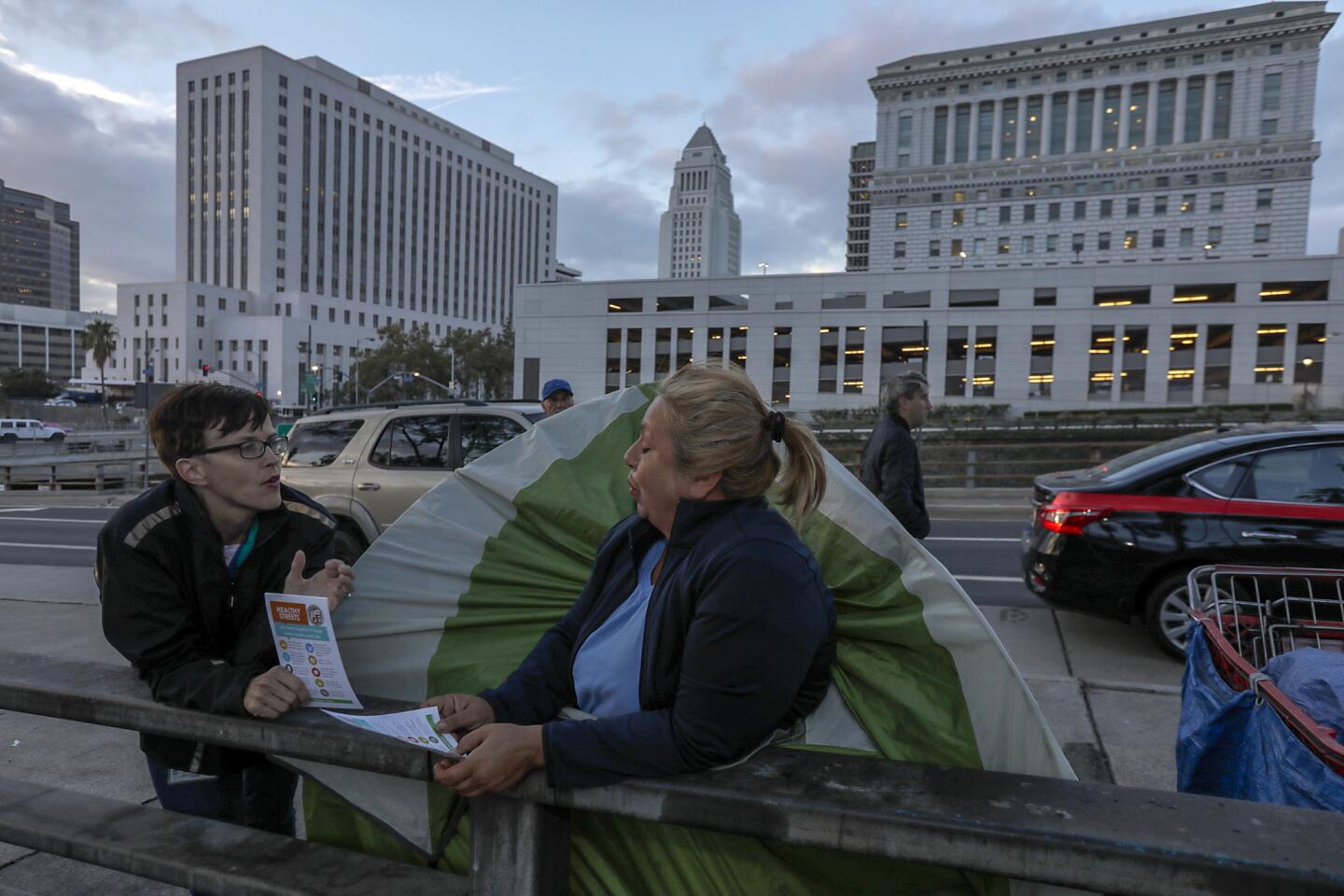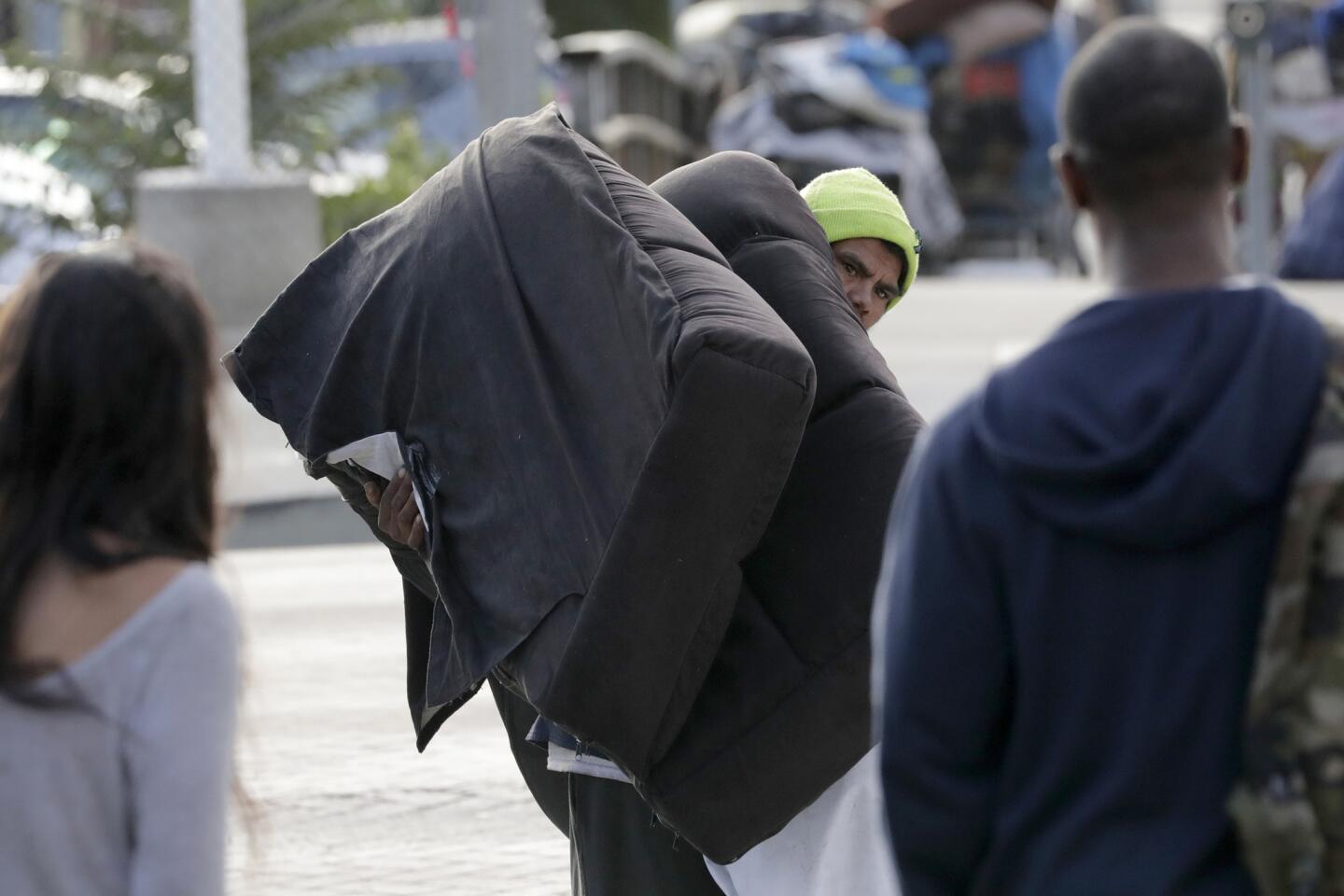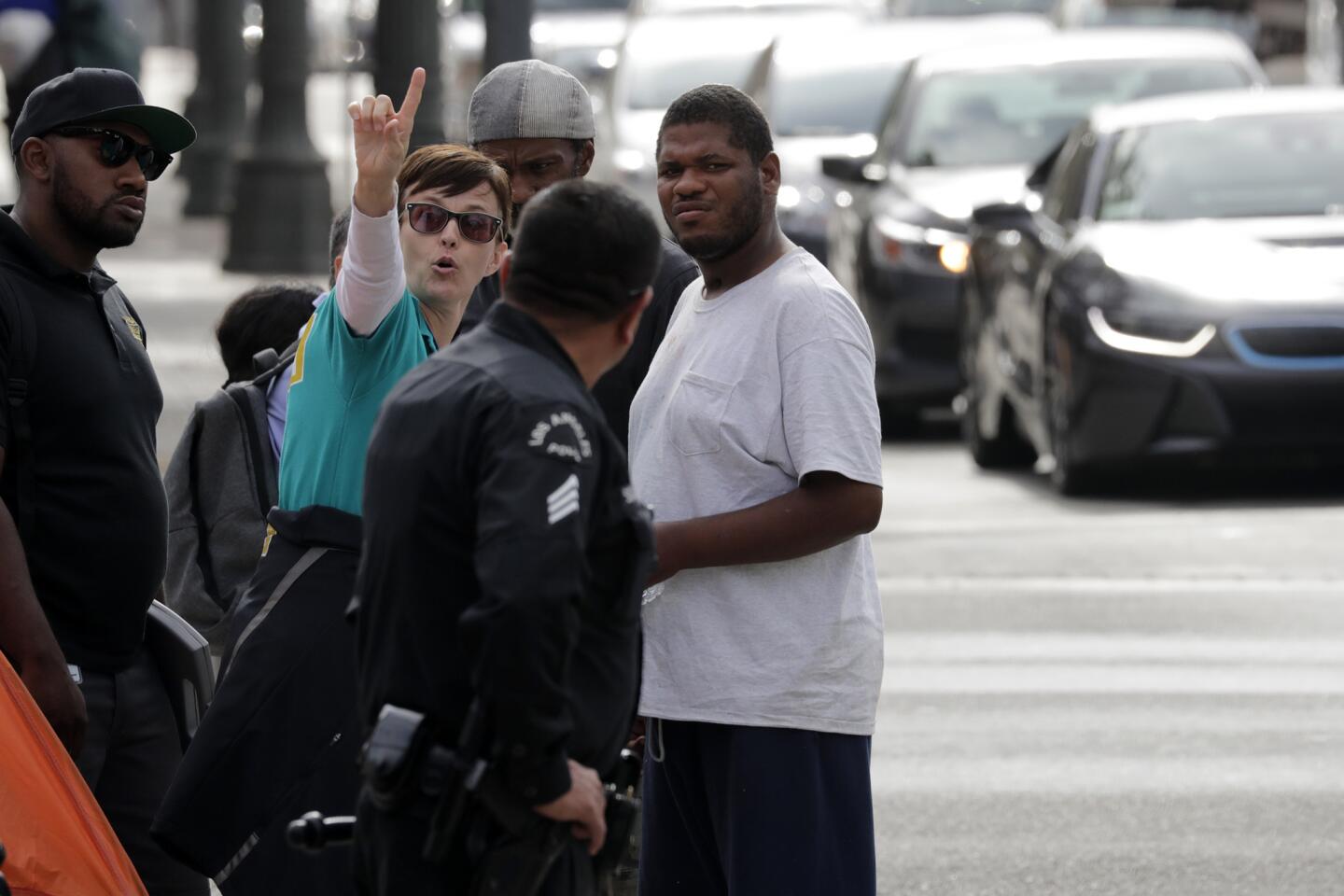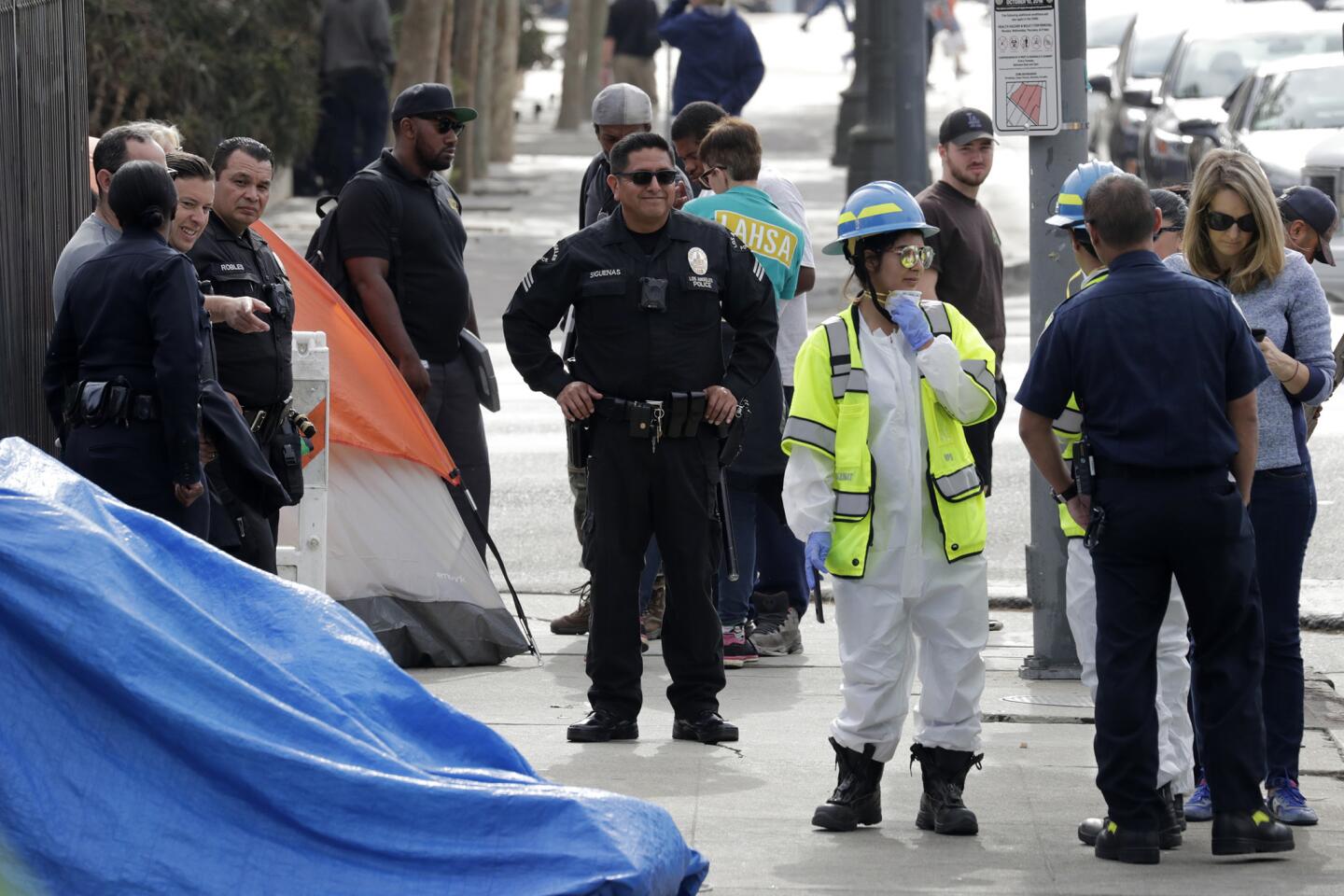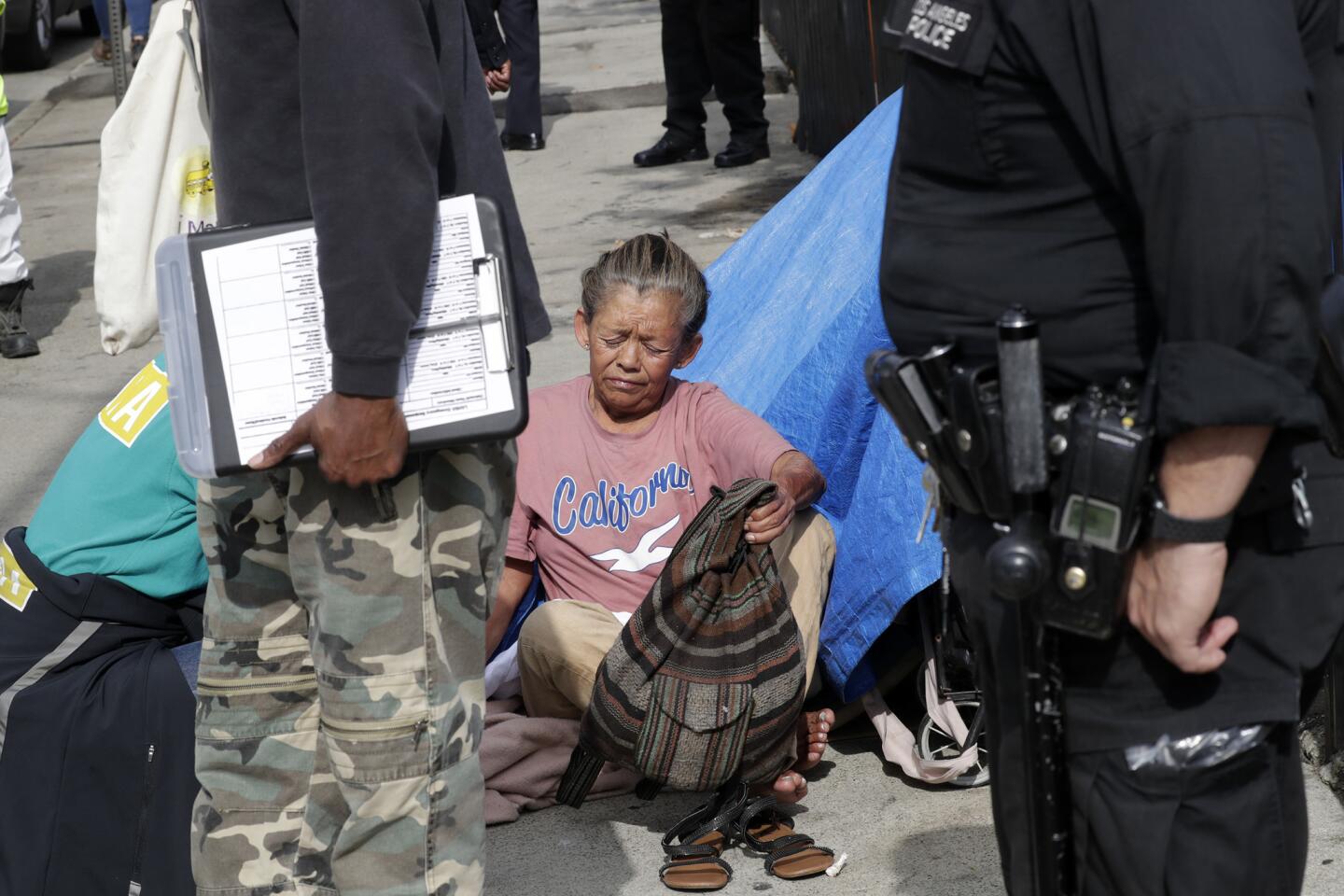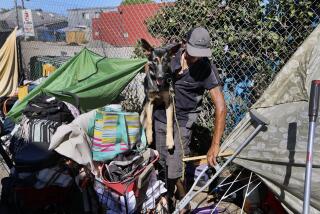Although L.A. mayor calls latest crackdown on homeless camps a success, legal issues cloud city’s plans
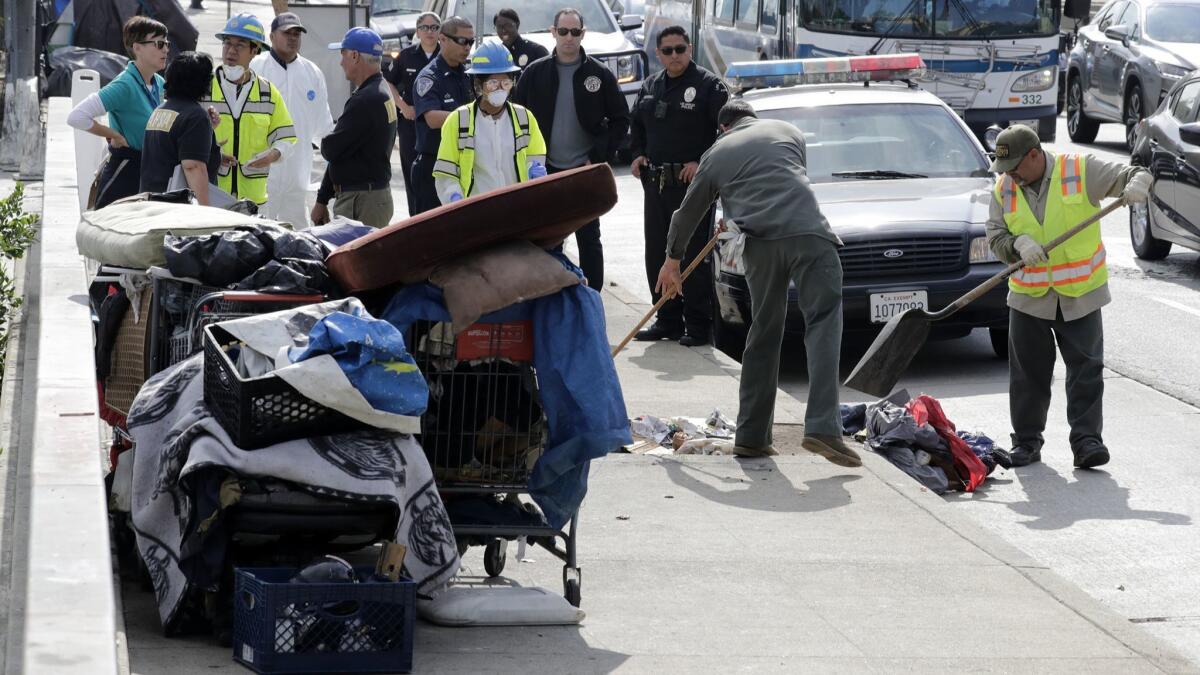
- Share via
To hear Mayor Eric Garcetti tell it, a city crackdown on downtown Los Angeles street encampments went off this month with barely a hitch: one arrest, seven people moved to shelters, 13 placed on the waiting list and the number of people in tents cut by more than half.
Cleanup crews with police escorts swept through homeless camps in the El Pueblo historic district, bagging and tagging possessions for storage and dumping tents, trash, needles and human waste.
Garcetti credited an “outreach-led” operation — social workers were at the camps for weeks before police and sanitation crews moved in — for a smooth rollout of a cleanup and enforcement model that he plans to bring to neighborhoods citywide.
But legal issues are clouding the city’s shelter and cleanup plans — and thrusting Garcetti in the middle of angry property owners and religious and civil rights advocates as he moves to wrest control of the city’s sprawling camps.
The crackdown took place in a “special enforcement zone” around El Puente, the first of 15 shelters the city plans to open as part of its Bridge Home program. Garcetti has touted the zones to counter fierce resistance from communities, including Sherman Oaks, San Pedro and Venice, to taking the shelters.
The city is under a 2016 federal injunction against summarily seizing and destroying homeless people’s property on skid row. This month, downtown business leaders packed a City Council committee meeting demanding officials go to trial to lift the injunction.
“Settling this … case, you give up on [skid row] as hopeless,” said Charlie Woo, a leading toy industry and downtown community leader.
“Some of us have spent almost half of our lifetimes making downtown come back,” said Carol Schatz, the retiring head of the Downtown Center Business Improvement District. “This has been an economic miracle that is in great jeopardy.”
This week, civil rights attorney Carol Sobel filed a federal lawsuit asking the court to intervene in camp cleanups in Venice. The lawsuit followed a letter from attorneys with the Legal Aid Foundation of Los Angeles warning of “serious constitutional questions” with the special zone enforcement.
Garcetti, in a phone interview, said he was hopeful he could find “common ground” with lawyers as the city builds homeless housing and shelters to ease the homelessness crisis.
”In the past, the issue has been reduced to either/or: Deal with crime and grime or wait eight years for new facilities,” Garcetti said. “For too long we’ve been talking through emissaries. … We’re firing on all pistons now, building record amount of supportive housing.”
But time and again, the city has lost or settled lawsuits over confiscating and tossing out homeless people’s property.
“I’m not going to walk away from this problem,” the mayor said. “I can’t and I won’t.“
Nearly 23,000 individuals camp in Los Angeles’ streets, canyons and riverbeds, the most of any city in the country. The U.S. 9th Circuit Court of Appeals ruled in September that homeless people can’t be prosecuted for sleeping in public when shelters are lacking.
In response to a proliferation of homeless camps, the city in recent years created sanitation rapid response teams led by the L.A. Police Department, and intensified regular cleanups under an elaborate protocol that was largely shaped by court rulings.
Under the protocol, the city posts three-day notices warning homeless people to get their belongings out of the way before sanitation teams arrive with garbage trucks, trash compressors and hazmat squads to power-wash the area and remove garbage.
Homeless people are supposed to fold up their tents from 6 a.m. to 9 p.m. or face arrest. Unattended belongings are seized and stored for 90 days at a skid row warehouse, where homeless people can retrieve them.
Contraband, weapons, contaminated or hazardous materials — needles, urine and explosive devices — are tossed in the trash. So are bulky items, such as mattresses, appliances, furniture, broken bikes and vending carts.
But what is hazardous, what is bulky and what is unattended? Tents with urine, blood spots or rat droppings — common in homeless camps — are considered contaminated and thrown out with their entire contents.
Homeless people who oversleep or ignore the cleanup notices are given 15 minutes to move their belongings. What’s left behind in the mad scramble — tent poles, boards, Hello Kitty backpacks, medication, IDs — goes into the garbage.
Some cleanups dismantle entire camps. In the El Pueblo sweep, 700 pounds of solid waste was destroyed; one bag went to the warehouse and another was returned to its owner.
Sobel, in her lawsuit, said Rebecca Cooley, a disabled homeless woman with Crohn’s disease, and her husband, Benjamin Hubert, lost almost everything they owned in an unannounced sweep in Venice in September 2017.
Another plaintiff, Andrew Zaroda, returned to the camp to find his property behind yellow police tape, the suit said. Zaroda persuaded an officer to let him retrieve some things but lost his transit pass and other important items, the suit contended.
Rob Wilcox, spokesman for City Atty. Mike Feuer, said the office would review the lawsuit but deferred comment.
Garcetti, in a news briefing this fall, acknowledged “unfortunate” instances of property destruction but said they are rare.
The public health threat from the camps, including the recent typhus outbreak, can’t be ignored, he said during the phone interview. While not all homeless people are criminals, Garcetti said, “there are public safety issues in Venice we need to address and resolve.”
In issuing the skid row injunction, U.S. District Judge S. James Otero also expressed concern about the public health risks of burgeoning homeless encampments.
But losing medication also can have serious consequences, the judge said in an April 2016 order. “To put it bluntly, plaintiffs may not survive without some of the essential property that has been confiscated,” he added.
Shelter operators told the City Council committee that skid row is so loaded with sofas, mattresses and barbecues that their employees could barely get to work. Otero, however, denied the city permission to throw out bulky items.
“If a bulky item ‘presents an immediate threat to public health or safety’ then it may be seized by the city and stored,” Otero wrote in a September 2017 order. “If a bulky item does not pose such a threat, then it must not be seized.”
Legal Aid attorneys said the city should bring trash pickup, showers, bathrooms and laundry to the camps, “not encampment sweeps and criminalization.”
Garcetti said he was encouraged that the lawyers had expressed a willingness to work with the city on making the cleanups better.
“Tell us how to do it,” he said.
Twitter: @geholland
More to Read
Sign up for Essential California
The most important California stories and recommendations in your inbox every morning.
You may occasionally receive promotional content from the Los Angeles Times.
